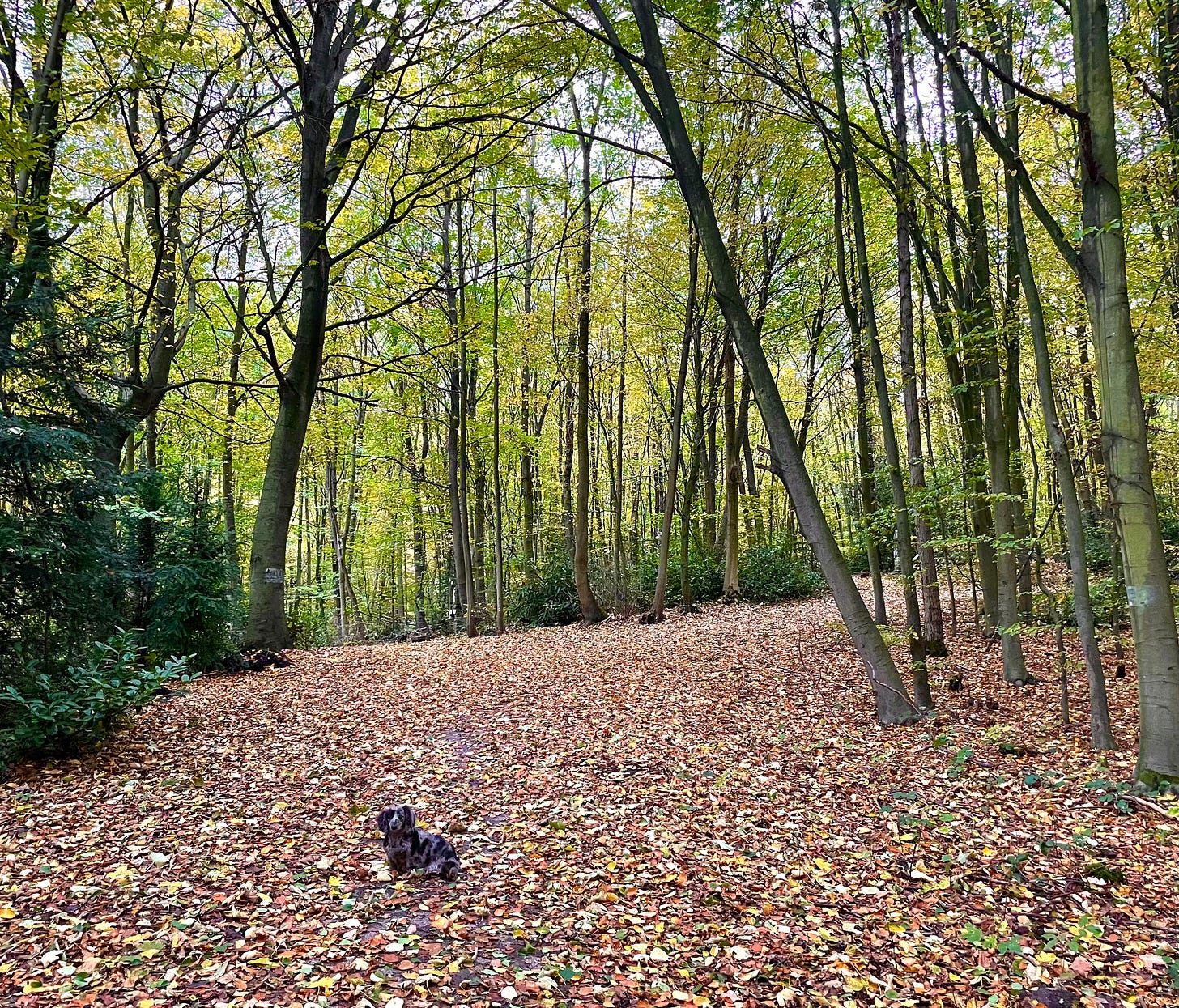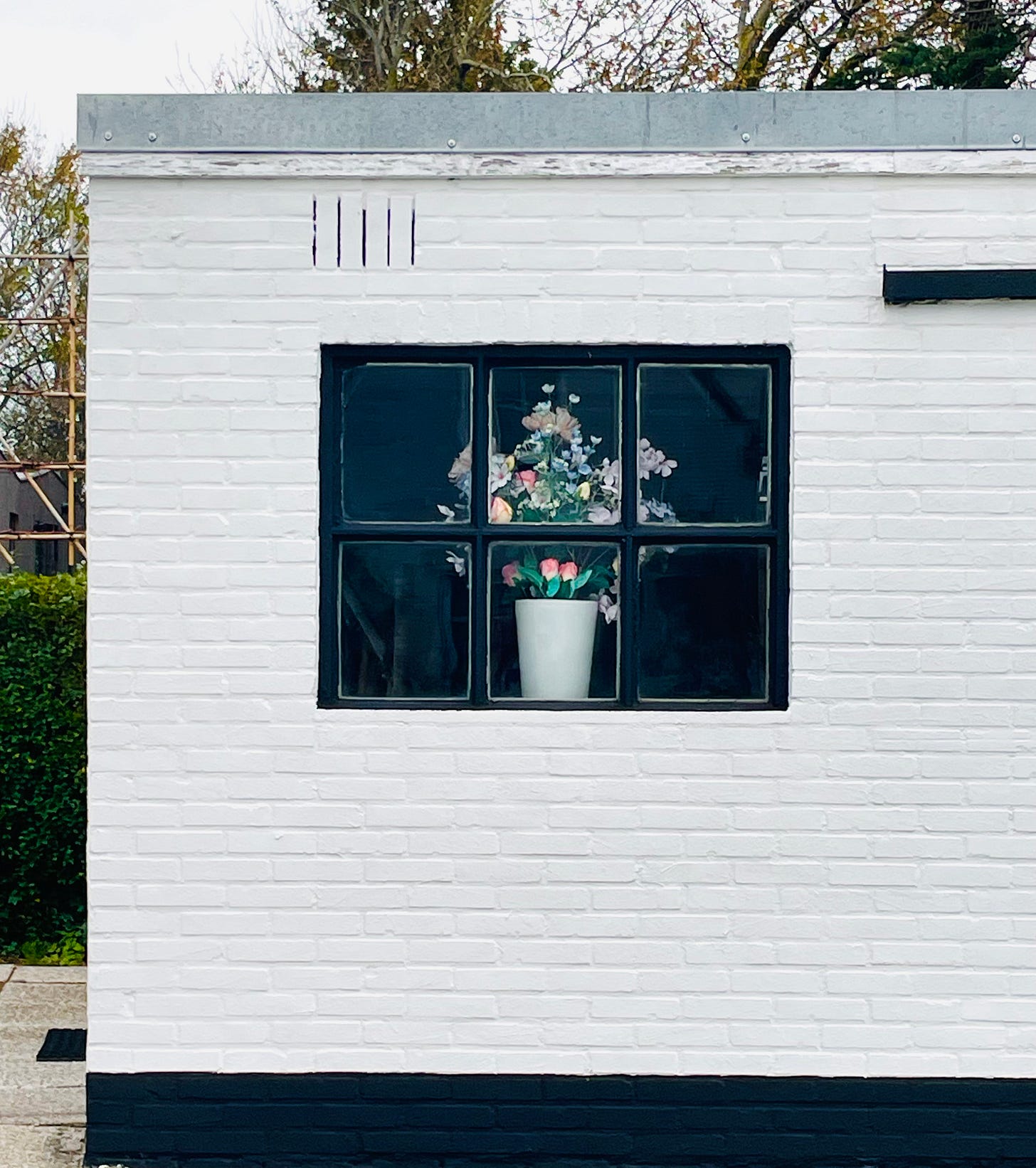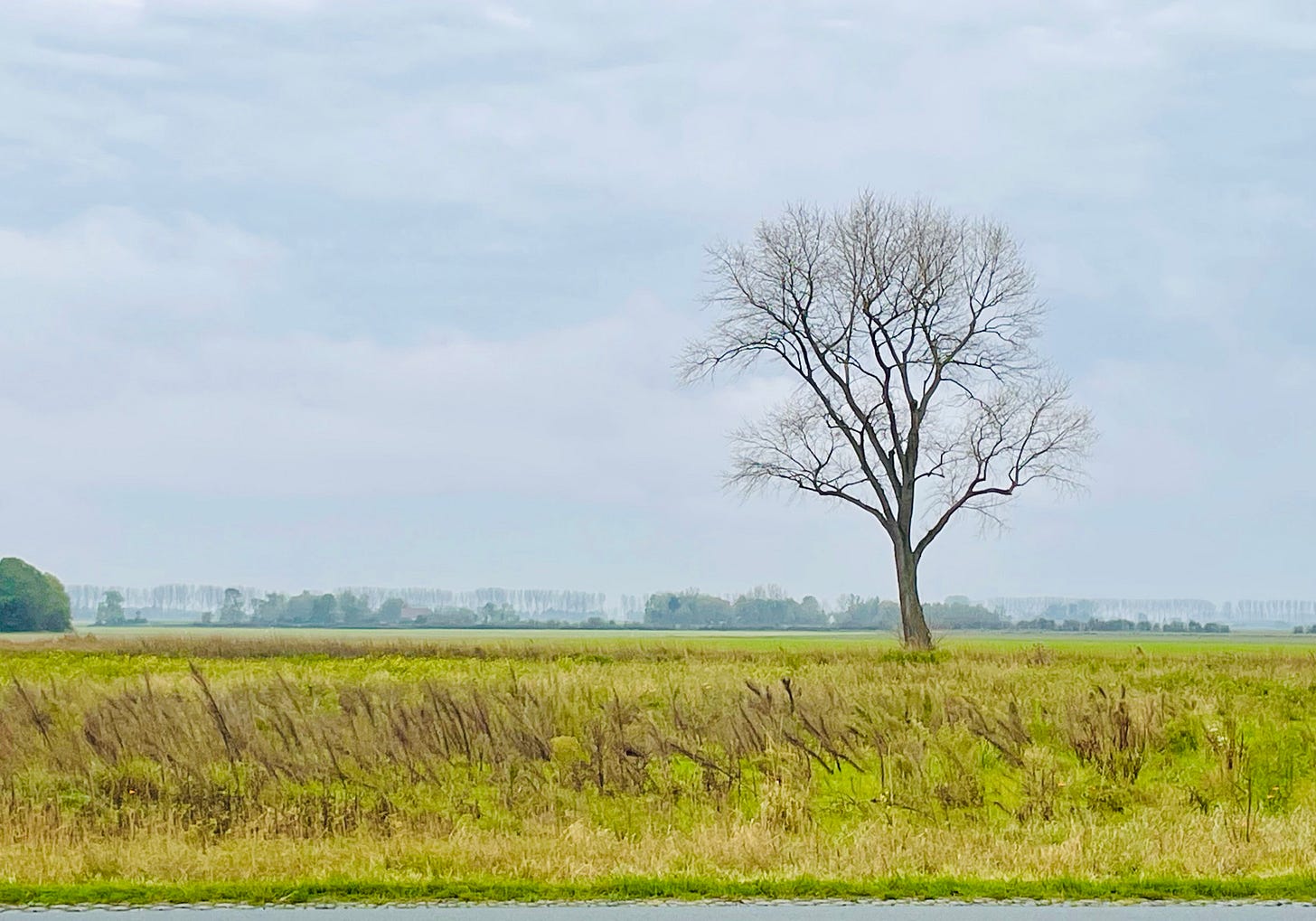How I learned to enjoy a daily walking habit
A necessity for living in Europe; A joy for living slow
In my next post, I will be dipping into research supported ways that slow living can improve one’s health - and first on the list is daily intentional walking. It’s an ideal slow living practice and an excellent way to improve your vitality, with being accessible, free, health promoting, and often instigates my very best ideas, but is it fun?
I’m a firm believer that adults too need play and, for a habit to stick there must be some joy involved. That’s how walking made my list of favorite slow living rituals - I have successfully developed a liking for walks and, I believe you can too.
It hasn’t been easy for me to begin anew my relationship with walking. To view it as a ritual, to make it special and happily devote a portion of my day to it came not of my own aspiration initially but out of plain necessity for more exercise and the desire to get out of the house while staying within my recreation budget. Moving to Europe and more recently becoming a mother have prompted a sharp rise in my walks per week. Walking is often more practical than driving here and it is a very effective means of soothing my tiny son. My resistance in the past has had nothing to do with laziness, rather it’s my usual affliction: my mind. I get bored too easily and I can think my way out of many a nice thing. As long as I can remember, I’ve just never really enjoyed a walk for a walk’s sake. Sure, I was okay with it if the scenery was new to me or to find or accomplish something, whether picking wildflowers, collecting seashells, or the occasional trek to blow off steam. But this didn’t equate to maintaining a sustainable, thoughtful habit. Perhaps it comes from my upbringing.
On the farm, there was little true recreation as the day’s chores were usually labor intensive enough that free time tended to be spent on less vigorous activities. Something like going for a walk just wasn’t done, however, bringing in the horses (a walk) or checking the fences (a long walk) were perfectly acceptable activities. The lifestyle was in so many ways supportive of good physical and mental health that the concept of self-care was not talked about or prioritised in the way it is in modern, especially urban, life - which tends to grind us into burnout if we don’t learn how to consciously avoid it.
When I moved to Europe, I didn’t own a car or even a bicycle. Like many people living in town, I chose an apartment within walking distance of my work at a local private practice and even closer to a market. For the first few months, rain, hail, or shine, I walked on average two hours a day. Twenty-five minutes to work, fifteen minutes to the market, other errands, and an evening promenade around the lake or back into the city center for some entertainment. It was all so new and exciting. My feet ached from wearing unsupportive footwear on cobblestone, but I didn’t mind and couldn’t afford new shoes. After just a few weeks, my legs were more toned, and I had a well-developed sense of direction. But my mind eventually caught up to my new routines and started to protest my commute and the time it required to get anywhere. By this time, all the routes were too familiar; I had surpassed a comfortable knowing of how to get around efficiently and moved on to mindless trudging as my form of transportation. It has been exacerbated by having moved away from California at the beginning of the cold season, unprepared to deal with the dark, damp, and frigid conditions that define German winters.
I knew that walking was good for me, but it would take time to realize I would be wise to befriend it.
Now, I truly look forward to my daily walks as a time to ponder, reset, or just drink in the fresh air and let my mind rest in the soft sounds of leave beneath my feet.
Walking has been there for me every day, in good times and bad, regardless of the weather, my whereabouts, or my mood. More recently, it has become a favorite pastime for my baby and I to share, and a boon in rough moments. Walking with a baby (or child) is also a different experience in practicing presence. Last week we visited the Netherlands for a much-needed getaway, however the last minutes of the journey in the car were more than my tiny son was willing to sit through. I don’t think it would have occurred to me before, to get out and walk, but as I gazed out the window at the quaint bike lane edging the road and the many dog-walkers, I had a why not? moment. I’m sure my husband and sister felt very awkward driving off towards the beach as I set off on foot with the baby and our dog. It was a blustery day but even with the wind and chill, this was an ideal alternative to sitting in the car with a crying baby – something that feels like torture to my new-mother nerves. I walked for less than an hour before my husband decided to come back for us, but in that time, I saw many lovely details that would have been invisible by car. Picturesque Dutch homes with large windows showcasing family life inside, tiny garden gnomes, a backyard dining table, and soggy farmland stretching for acres. It would have more ordinary to just mentally push through that last bit of the journey by car, but I’m so glad that I didn’t, and it won’t be the last time.
If you’re interested in giving it a go, here are my best tried and true ideas to get you started or out of a rut:
Have a plan. One mistake I made repeatedly when I first started intentionally walking daily was that I would simply throw on some shoes and walk primarily around my neighborhood. Every. Single. Day. Until I became so bored of this that I considered quitting. Then, I had a small epiphany. It occurred to me that for any other form of recreation, I would normally take a little effort to plan ahead, set up gear, or even drive to a specific location. Why wasn’t I preparing for my walks? I suppose going for a walk doesn’t sound as fancy as heading to the pool, going backpacking, or doing yoga, but I would argue that the humble stroll can be just as nice, if allowed. Once I began to make a ritual of it, things got immensely better. I now wear comfy sport shoes and have the perfect Übergangsjacke (season transition jacket – a German must-have item), I often pack a small snack, and have mastered the use of several apps that help me find local scenic spots or trails.
Have a destination. Even better if you can dangle a carrot for yourself - some kind of treat waiting for you there. Whether it be a peaceful reading spot on a parkbench, a breathtaking view, your favorite flower shop, or the opportunity to go for a swim at the lake, including a destination will give you a little extra nudge out the door.
Tune in to your body. Ever heard of walking meditation? I am not great at meditating and can barely sit through an entire film showing, even if I like it, but I highly recommend checking out “The Body Scan” meditation by Jon Kabat-Zinn. This research-backed exercise can be done while still or in motion and seeks to keep the mind from wandering by focusing on one body part at a time. I find it to be a far most interesting and achievable than focusing on the breath alone. Listening to a guided recording is super helpful but eventually this practice can become second nature. This may also tune you in to gait and postural imbalances and is a great practice in bodily awareness, which tends to be lacking among Westerners. Sarah Blondin (here on Substack) also has beautiful guided meditations available on her podcast that are perfect for walking presence.
It’s okay to multitask. I know, I know, coming from the one who was nearly driven to madness by multitasking, it can be a slippery slope for us Type A personalities. This however is one time when you get a free pass. I often use walks as my time to catch up with friends in person, on the phone, listen to my favorite podcasts or do a walking meditation. I think it’s important that the nature of the secondary activity is wholesome and doesn’t completely distract you from the walk.
Have a companion. Sometimes we just aren’t motivated to do something for ourselves in the way we would be to help another. Volunteering to walk dogs at your local animal shelter or taking your friend’s pet or child along for a meander is sure to give you both a worthwhile experience.
Thanks for reading :-)
I’d love to know your favorite walks and how you enjoy them and if you’d like to support my work, consider upgrading your subscription, sharing this post, or treating me to a cup of tea. ♥️
xx Chesica









Good advice and so interesting to read how your thinking has shifted. Have you read ‘Do/Walk’ by Libby DeLana? Also lovely writing on the power of walking.
Thank you for this lovely post. I've always enjoyed walking. Audiobooks have become my constant company in the past three years. This year I've added knitting to my walks and have started carrying a small project with me.